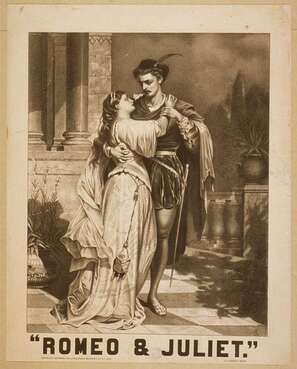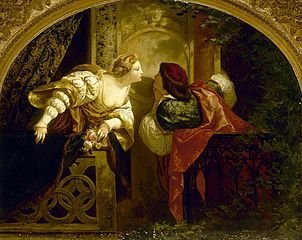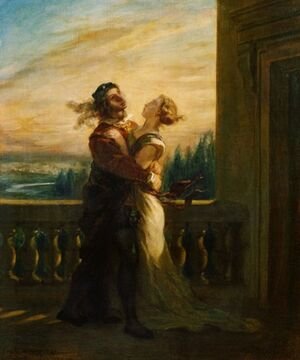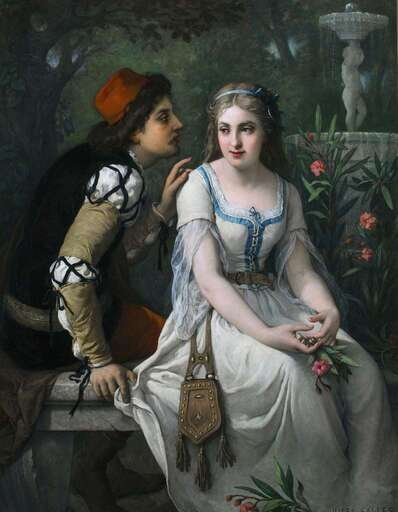Shakespeare uses special writing tricks that make his language in “Romeo and Juliet” more beautiful and deep. These tricks also help him express the complicated feelings and ideas in the story.
The following are important literary devices in Romeo and Juliet that help convey the complex emotions and themes of “Romeo and Juliet”.
Daily Test - Attempt Now

Literary Devices in Romeo and Juliet
Metaphor
A comparison between two unlike things not using “like” or “as.”
Example: In Act 2, Scene 2, Juliet says, “But, soft! What light through yonder window breaks? It is the east, and Juliet is the sun.” Here, Juliet compares herself to the sun, using a metaphor to express her love for Romeo.
Simile
A comparison between two unlike things using “like” or “as.”
Example: In Act 1, Scene 4, Romeo compares Juliet’s beauty to a rich jewel in an Ethiope’s ear when he says, “So shows a snowy dove trooping with crows, As yonder lady o’er her fellows shows.”
Foreshadowing
When the author hints at future events in the story.
Example: In Act 1, Scene 5, when Romeo and Juliet meet at the Capulet’s party, they speak of their love as if it’s fated, hinting at the tragic events to come.
Irony
When there’s a difference between appearance and reality.
Example: Dramatic irony is prevalent throughout the play. The audience knows Juliet isn’t really dead, but Romeo doesn’t, leading to his tragic suicide at her tomb.
Personification
Giving human characteristics to non-human things.
Example: In Act 2, Scene 3, Friar Laurence says, “The gray-eyed morn smiles on the frowning night.” Here, morning is personified as smiling.
Allusion
A reference to another well-known work, event, person, or place.
Example: In Act 2, Scene 4, Mercutio makes several references to historical figures and mythology, adding depth to his character.
Symbolism
When something represents or stands for something else.
Example: The recurring motif of light and darkness symbolizes the contrast between love and hate, as seen in Romeo and Juliet’s balcony scene.
Pun
A play on words with multiple meanings.
Example: In Act 1, Scene 1, when Mercutio says, “Nay, gentle Romeo, we must have you dance,” he’s using the word “dance” to mean both dancing at the party and engaging in a playful conversation.
Oxymoron
The combination of contradictory or opposing words.
Example: In Act 1, Scene 1, Romeo says, “Why then, O brawling love, O loving hate,” using “loving hate” as an oxymoron to describe the conflicting emotions he feels.
Soliloquy
A character’s inner thoughts are spoken aloud when they’re alone on stage.
Example: In Act 2, Scene 2, Juliet delivers a famous soliloquy where she expresses her love for Romeo, unaware that he is listening.
These fancy literary devices in Romeo and Juliet add a lot of richness and charm to Shakespeare‘s words.
Also, Read

Romeo and Juliet Plot Summary

Character analysis of Romeo and Juliet

Themes of Romeo and Juliet
Copyright Notice:📚 Teachers and students are granted permission to use, reproduce, and distribute this content solely for educational and non-commercial purposes. 🚫 Unauthorized copying, distribution, or reproduction for commercial purposes is strictly prohibited. Any infringement may result in legal action.
